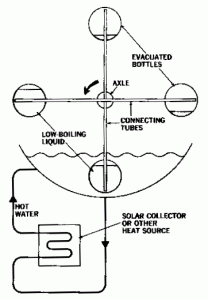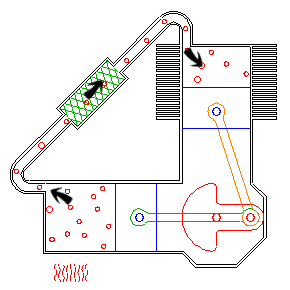Future Iterations
Dec 2nd, 2013 by huntek3
For future iterations, there are several concepts we would like to explore possible sun-tracking mechanisms, lamination methods and packing techniques for transporting the evacuated tubes to Ghana. We also look forward to passing our experiences and incites on to future students who will work on the project.
Heliotrope
Although the rotation of the earth is 15° per hour, the movement of the sun across the sky cannot be strictly described by 15°/hr increments due to the declination of the earth’s axis at 23°. This characterization would only work if you were on the equator at the equinox. For all other cases there would be a varying magnitude of error.
The sun has apparent changes in velocity, appearing to move more quickly the closer it is to dawn or dusk. The magnitude of this difference changes everyday as the angle of the Earth on its axis relative to the sun changes. To maximize efficiency, we also need to do tracking on two axes. This type of system is used worldwide to control astronomical telescopes. Software is readily available to predict and track the motion of the sun across the sky.



We considered using a gear mechanism that involved an escapement mechanism. The multitude of moving parts would also require maintenance, especially considering the subtropical Ghanaian climate, which ranges from rainy and humid to dry and windy. Dust accumulation can render complex gear systems useless. We determined that a completely solid state, non-electronic device would be needed to power the reflector’s movements.
Two realistic approaches with a large amount of literature available are Freon engines and Sterling engines. Freon engines use chemical heat capacities and thermal expansion of a low boiling point liquid in two mirror image shaded identical tanks to make it work. A Freon engine could very easily be manufactured in the KNUST machine shop. The needed supplies would be a large metal drum to be sealed and propane (Freon, or any other liquid that has a very low boiling point) which could be ordered through Professor Darkwah’s chemical engineering department. The lack of mechanism beyond he bearing upon which the entire solar furnace reduces necessary maintenance and environmental protection more than any other approach. The Freon engine has the further advantage of requiring no technology beyond the welding during fabrication and lubrication of a single bearing for each axis to operate..
A Stirling engine would also be feasible, albeit more complicated and expensive to fabricate and maintain. A Stirling engine works by the cyclic compression and expansion of air or other gas at different temperature levels, similarly to the Freon engine.
Packing Techniques
The evacuated tubes must be transported from the US to Ghana, as they are not locally available there. Being double walled glass chambers, they are fragile because they are fairly brittle. To ensure that the tubes are not damaged in transport, as to not waste time or material resources, a packing technique must be developed to protect them in transport.